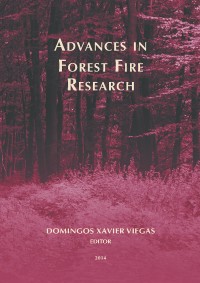Please use this identifier to cite or link to this item:
https://hdl.handle.net/10316.2/34166| Title: | Addressing trade-offs among fuel management scenarios through a dynamic and spatial integrated approach for enhanced decision-making in eucalyptus forest | Authors: | Botequim, Brigite Ager, Alan Pacheco, Abílio P. Oliveira, Tiago Claro, Joao Fernandes, Paulo M. Borges, José G. |
Keywords: | Forest System dynamic Model;Fire behavior;Spread rate;Budget constraints;Landscape Treatment Designer;Fuel management strategies | Issue Date: | 2014 | Publisher: | Imprensa da Universidade de Coimbra | Journal: | http://hdl.handle.net/10316.2/34013 | Abstract: | Addressing sustainability concerns in Mediterranean forest ecosystems management with the growing incidence of fires impacting the forest areas over the past decades is a complex task. The current framework was driven taking into account several decision support tools of the United States Wildfire Modeling System for wildfire risk management, which focuses on a three-tiered approach strategy calibrated and applied in Portugal. In addition, contains spatial and temporal dimensions to integrate landscape-scale properties required to meet fire management goals, without encroaching budget constraints, while meeting demands for timber values. Explicitly : i) Developing and applying a Forest System Dynamic Model for identifying temporal stand-scale and understory fuel dynamics, including a site and regional percentage of burnt probability; ii) Building for each landscapes fuel population distribution the expected fire behaviour curve trends, i.e. the corresponding spread rate and flame length using EXRATE tool and FlamMap simulator, respectively, thereby allowing the calculation of changes in the annual expected wood loss; iii) Spatially optimize in the Landscape Treatment Designer tool (LTD) the location of fuel treatments distribution. For testing and demonstration purposes, the research considered an application encompassing three properties of pulp mill’s from the Grupo Portucel Soporcel (gPS) in the North, Central and South of Portugal, where eucalypt (E. globulus) is predominant (extent ≈ 3665 ha). A sensitivity analysis was performed by measuring trade-offs among specific treatment scenarios: “treated” vs “untreated” or “treated considering neighbors”. The effect of each scenario was changed by a set percentage of optimal parameters and a series of LTD runs was recorded as a project. The protection of the eucalyptus trees from potential wildfires loss was assumed as a key primary goal, following by a set of quantitative target stand structures, budgets and policies constraints in proportion of area treated, and fire behaviour thresholds for each farm. Parameters decisions were assessed to address the identification of thresholds for radical change in fire behavior, and further insight to support hazard-reduction fuel practices. The accuracy of the results demonstrates the usefulness and relevance of the pursued to calculate the potential effect of treatments strategies on improving fire resiliency. Further, the approach provided an overview of management guidelines for fuel modifications to make the gPS eucalyptus farms in Portuguese conditions more resistant to fire, selecting priority intervention areas and designing effective strategies. | URI: | https://hdl.handle.net/10316.2/34166 | ISBN: | 978-989-26-0884-6 (PDF) | DOI: | 10.14195/978-989-26-0884-6_178 | Rights: | open access |
| Appears in Collections: | Advances in forest fire research |
Files in This Item:
| File | Description | Size | Format | |
|---|---|---|---|---|
| 978-989-26-0884-6_178.pdf | 1.59 MB | Adobe PDF |  |
Items in DSpace are protected by copyright, with all rights reserved, unless otherwise indicated.
